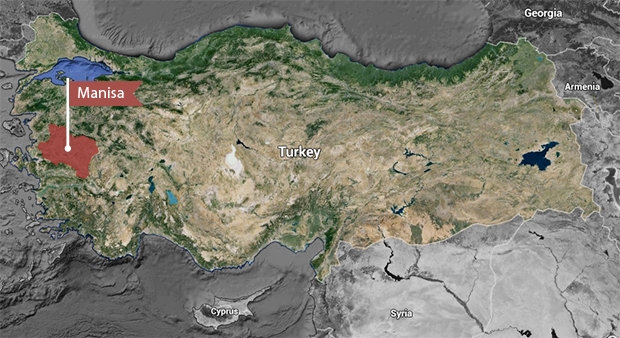Turkey coal mine disaster leaves 17 dead, hundreds trapped

At least 17 miners were killed and more than 200 remain trapped underground after an explosion in a coal mine in the western Turkish province of Manisa on Tuesday, officials said.
Turkey's disaster and management agency AFAD in its latest report also said there were at least 1l miners injured.
Rescue workers are trying desperately to reach the scores of trapped miners and have managed to evacuate around 50, a security source told AFP.
The source said there are two air pockets in the mine, one of which was open so rescuers were able to reach the workers, but the second was blocked with workers trapped inside.
An explosion at the mine in Soma district was believed to have been triggered by a faulty electrical transformer at around 1230 GMT.
Hundreds of people, mostly from the mining company, were gathered around the explosion site as rescuers brought out wounded workers, who were having difficulty breathing and coughing due to the dust.
Fire officials were trying to pump clean air into the mine shaft for those who remain trapped some two kilometres (one mile) below the surface and four kilometres from the entrance.
The mining company Soma Komur issued a statement calling the mine collapse a "tragic accident".
"Unfortunately, some of our workers have lost their lives in this tragic accident," the statement said.
"The accident happened despite maximum safety measures and inspections, but we have been able to take prompt action," it added.
Turkey's ministry of labour and social security said the mine was last inspected on March 17 and was found to be compliant with safety regulations.
Turkish Prime Minister Recep Tayyip Erdogan expressed his "heartfelt condolences" to the families of those who died.
"Some of the workers have been rescued and I hope we will be able to rescue the others," Erdogan said at an event with journalists in Ankara.
Local media said there were 580 people trapped in the mine at the time of the explosion but many had escaped. Large crowds of tearful and worried family members gathered near the site and the hospital.
"Four separate rescue teams are currently working in the mine. The fire is creating a problem but oxygen is being pumped into the mine shafts that weren't affected," Energy Minister Taner Yildiz told journalists before heading to Manisa.
The miners are all thought to have gas masks, but it was not clear how long they would last.
Vedat Didari, a professor of mining, told AFP that the biggest risk is the loss of oxygen.
"If the ceiling fans are not working, the workers could die within an hour," said Didari, from the Bulent Ecevit University in the city of Zonguldak.
Rescue efforts have begun bearing fruit with dozens of miners pulled from the mine, AA correspondent on the scene reports.
Some of them walked out fine and some others were taken out on stretchers free of critical injuries, he has added.
AA correspondent has said three more bodies have since been taken out of the mine in blankets.
President Abdullah Gul has ordered the Manisa Governor’s Office to use all means available to state officials to rescue the miners.
Aid group Turkish Red Crescent has dispatched a team of five experts to the scene to help rescue efforts. Turkish Health Ministry, the state emergency agency and Istanbul Governor's Office have also sent rescue aid in an effort to help the ongoing operations.
The Aegean region head of Maden-Is mine workers union, Tamer Kucukgencay said the fire has consumed the oxygen inside the mine and they are continuously pumping fresh air into the mine for the stranded workers.
A huge crowd of relatives of the miners are waiting outside the mine for good news on the rescue efforts.
Middle East Eye propose une couverture et une analyse indépendantes et incomparables du Moyen-Orient, de l’Afrique du Nord et d’autres régions du monde. Pour en savoir plus sur la reprise de ce contenu et les frais qui s’appliquent, veuillez remplir ce formulaire [en anglais]. Pour en savoir plus sur MEE, cliquez ici [en anglais].

